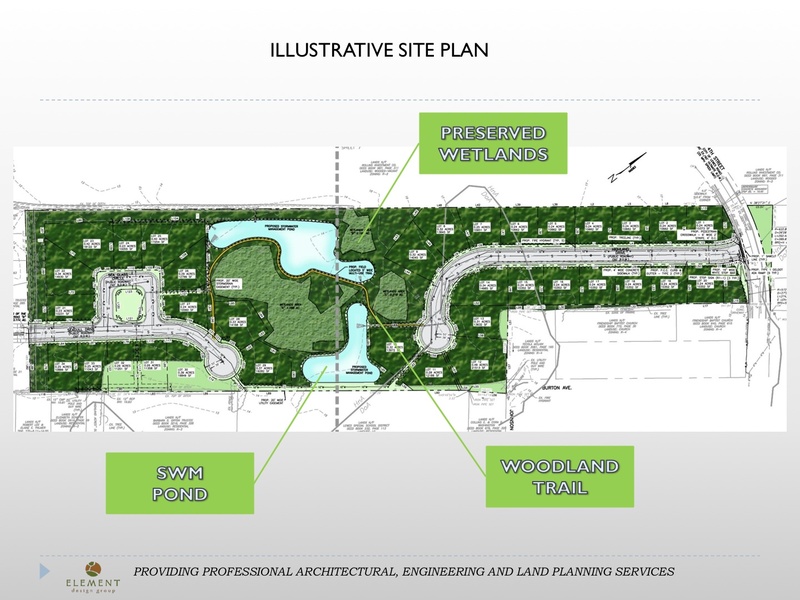Highland Heights tax ditch concerns Lewes planners
A faulty drainage ditch and street connections to the rest of Lewes are among the top issues for the Lewes Planning Commission as it nears a decision on preliminary consent for the proposed Highland Heights development.
At a recent meeting, the commission brought major concerns to the forefront. Jack Lingo Asset Management is planning to develop 18.5 acres of wooded land between West Fourth Street and Seagull Drive into 34 single-family lots. The proposed plan has drawn interest from Lewes residents, who have packed most city meetings regarding the proposed subdivision.
The commission will meet Wednesday, Aug. 20, to discuss the development and could make a recommendation. The deadline for a vote is Tuesday, Sept. 16.
Much of the commission's discussion centered around a damaged drainage pipe that lies in a tax ditch bordering the Highland Heights property. Tax ditch manager Joe Stormer, a Seagull Drive resident, says a culvert pipe was improperly installed above the water level in the late 1990s. To fix the problem, a 6-inch drainage pipe was added, but build up and damaged sections of the culvert have rendered a 650-foot section of the tax ditch useless.
Commissioner Barbara Vaughan said she is very concerned moving forward.
“I think we're dealing with a lot of water issues that at this present time I'm very uncomfortable with because we don't have enough specific information about how they're going to deal with it,” she said.
Commission Vice Chair Kay Carnahan said the ditch poses a number of unanswered questions, including funding for ditch repair, a reasonable timetable to fix the ditch and whether the 34 homes of Highland Heights will be accepted into the tax ditch.
“I think that the developer should proceed at his own risk,” she said. “If this were to proceed concurrently, and there were some insurmountable engineering problems, well they're proceeding at their own risk because this development needs this tax ditch to be functioning.”
The development design has two centrally located retention ponds to help with stormwater, but the tax ditch is still a factor in the design's stormwater management.
Stormer said he heard an estimate of about $150,000 to remove and replace the culvert at a proper depth, an estimate he believes to be much too low. More than 200 lots comprise the tax ditch; property owners are charged $15 per year, he said. Unless the developer pays for the entire cost of fixing the problem or works with the owner of the undeveloped Rollins parcel above Highland Heights, Stormer said, he doesn't think the ditch problem will be resolved.
Planning commission attorney Michael Hoffman said the city can require the developer to offer a clear path forward for the tax ditch as a condition for final approval. Then further along in the process, final approval will not be given until the city engineer has signed off on a plan, he said.
In addition to water and drainage issues, commissioners also expressed concern with a lack of connectivity to the rest of Lewes in the development's design. The development is configured with an entrance off Seagull Drive and another from West Fourth Street. Each street ends in a cul-de-sac near the center of the parcel. Only a multi-use trail connects the two sections of the community.
“Continuous communities is what the state is pushing and I don't see two cul-de-sacs as being advantageous,” said Commissioner Joe Hoechner, who also said stub streets should be added to connect to the undeveloped Rollins property to the north.
Commissioner Nina Cannata also supports connecting the two sections of the development.
“That would increase the connectivity; that would increase the safety,” she said. “I believe it could be designed in such a way that it would not be a major pass through at 45 mph. That would solve the connectivity problem and the safety problem.”
Commissioner Chairman Mike Mahaffie is a supporter of connectivity, but he suggested a pedestrian path to neighboring Highland Acres. At the June public hearing on Highland Heights, some residents wanted to connect the east part of Lewes with the west through an existing easement between Highland Heights and Highland Acres. Highland Acres residents did not support the idea of a road, but Mahaffie wonders if a pedestrian path may be feasible.
“If there could be a pedestrian cut-through, I could see some value to that,” he said. “Tying it into the rest of town is a possibility.”
From a safety standpoint, Mahaffie is also interested in the Highland Heights to Highland Acres connection as an access point for emergency personnel. He said it could increase response time for personnel who currently have to drive around the city to access those communities.
“Frankly that would help some of the surrounding neighborhoods that are not easily accessible from the main part of the city,” he said.
The planning commission has 90 days from the June 18 public hearing to render a decision on preliminary consent. A special meeting dedicated to Highland Heights is scheduled for Tuesday, Sept. 9.
Nick Roth is the news editor. He has been with the Cape Gazette since 2012, previously covering town beats in Milton and Lewes. In addition to serving on the editorial board and handling page layout, Nick is responsible for the weekly Delaware History in Photographs feature and enjoys writing stories about the Cape Region’s history. Prior to the Cape Gazette, Nick worked for the Delmarva Media Group, including the Delaware Wave, Delaware Coast Press and Salisbury Daily Times. He also contributed to The News Journal. Originally from Boyertown, Pa., Nick attended Shippensburg University in central Pennsylvania, graduating in 2007 with a bachelor’s degree in journalism. He’s won several MDDC awards during his career for both writing and photography. In his free time, he enjoys golfing, going to the beach with his family and cheering for Philadelphia sports teams.
























































